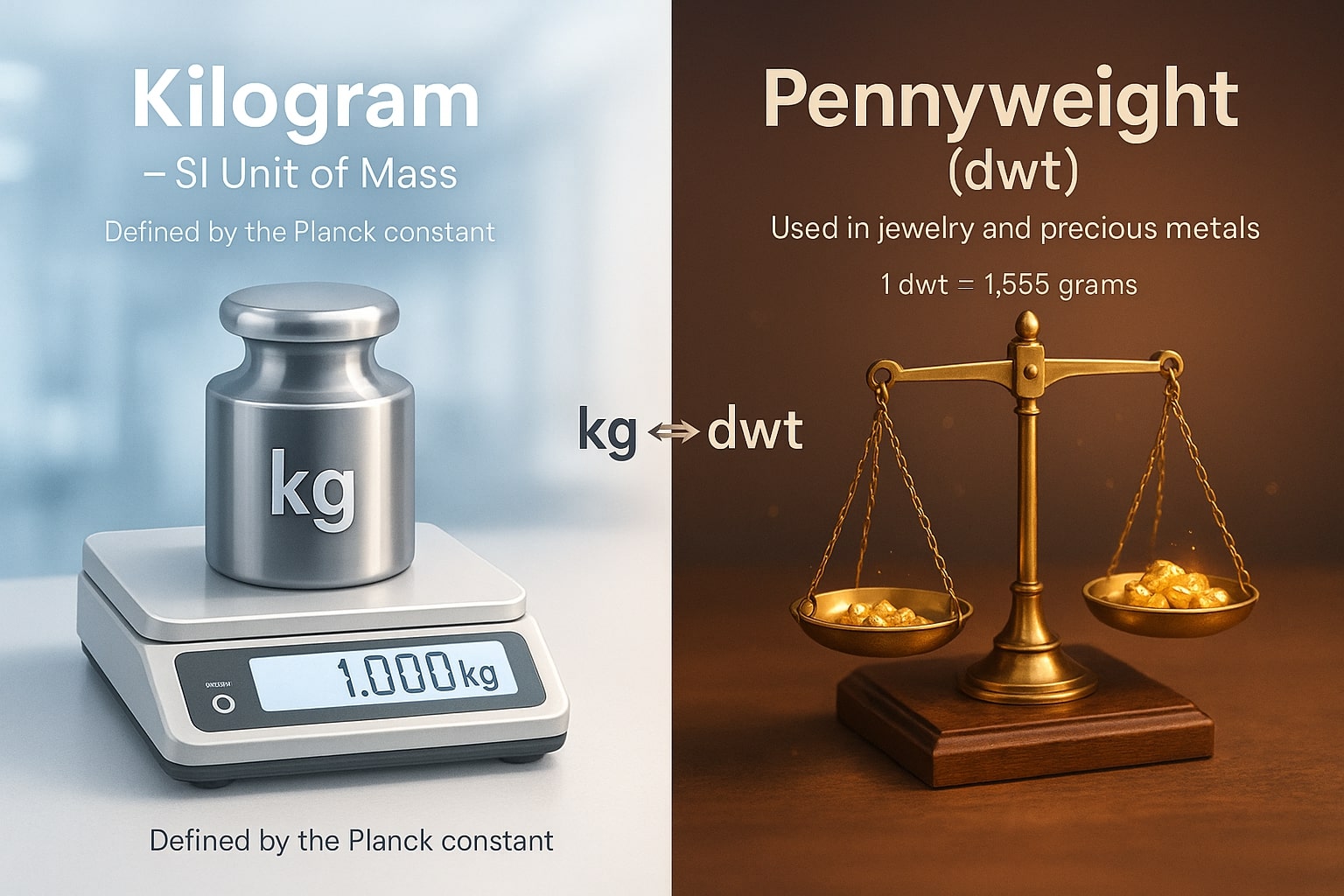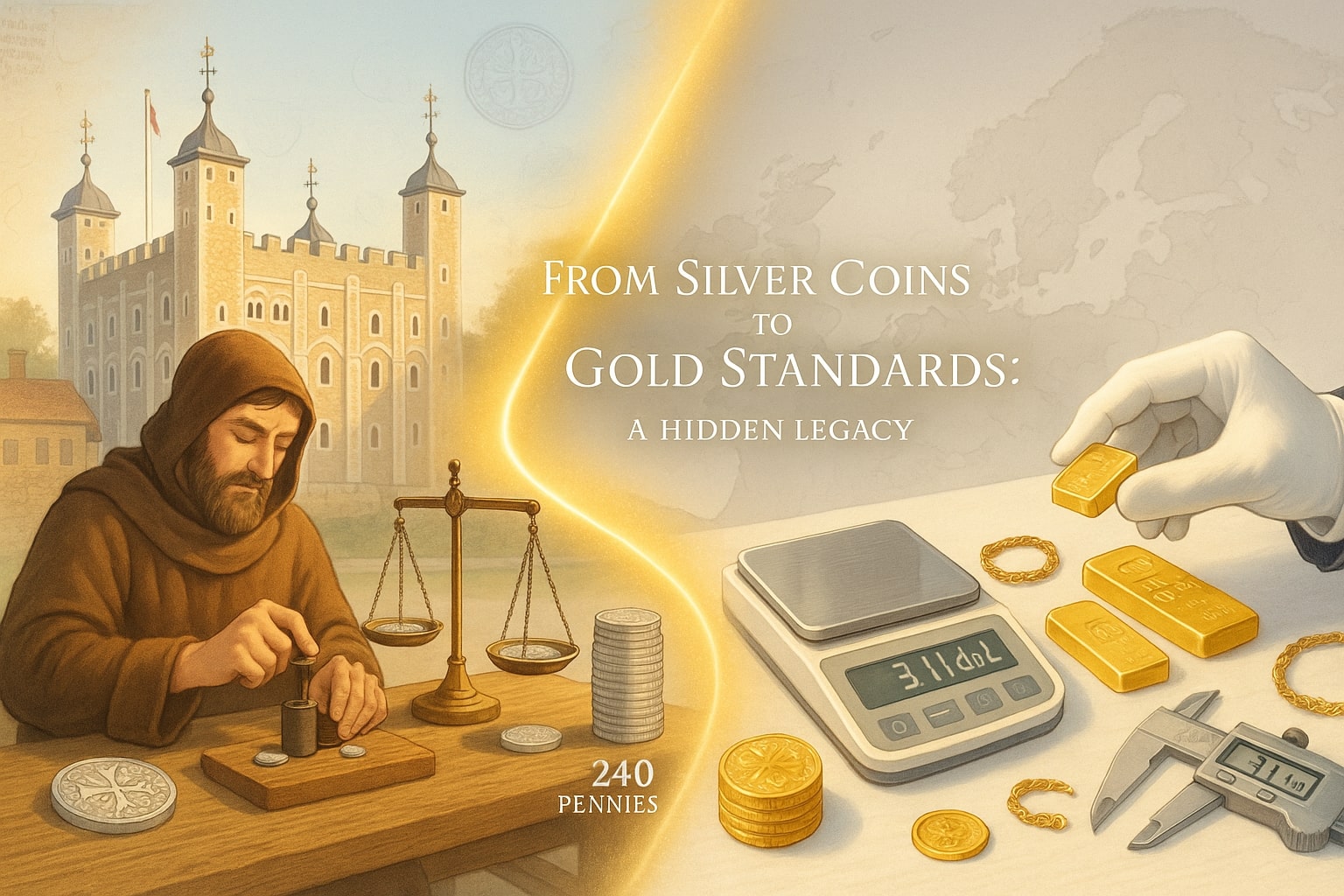kilograms to pennyweights – How to convert kg to dwt
Need to convert kilograms to pennyweights? Whether you're dealing with precious metals, jewelry, or refined alloys, knowing how to convert kg to dwt is essential in many professional and trade applications. This article breaks down what both units mean, how to convert them accurately, and some surprising facts you may not know.
Kilograms and Pennyweights (dwt)
The kilogram (kg) is the SI base unit of mass, used around the world for measuring everything from food to freight. It's defined scientifically by the Planck constant, making it a stable and universally accepted standard.
-
Symbol: kg
-
Defined by: Planck constant
-
Used in: Science, industry, commerce
For common unit switches like grams or pounds, check out our Weight Converter
The pennyweight (dwt) is a unit of mass commonly used in the troy weight system, which is traditionally applied in the weighing of precious metals like gold, silver, and platinum. It's still widely used in jewelry-making and metal refining industries.
-
Symbol: dwt
-
1 dwt = 24 grains = 1/20 troy ounce
-
1 dwt ≈ 1.55517384 grams
-
Used in: Jewelry, dentistry, bullion trading

Conversion Formula: Kilograms to Pennyweights
To convert kilograms to pennyweights, follow this simple formula:
dwt = kg × 1000⁄1.55517384
Example:
1 kg = 1000⁄1.55517384 ≈ 643.014931 dwt
Did you know?
-
Kilograms replaced the gram as the base unit of mass in the metric system back in 1795, but for nearly 130 years, it was defined by a platinum-iridium cylinder in Paris.
-
Pennyweights come from the old English coinage system, where one silver penny used to weigh exactly 1 pennyweight. It dates back to medieval England, and the term still holds in modern precious metal trading.
-
A gold wedding band typically weighs between 3–7 dwt, depending on size and design. That makes this unit ideal for pricing and design in custom jewelry.
-
The U.S. Mint and the Assay Offices once used pennyweights to test and certify gold coins during the California Gold Rush.
From Silver Coins to Gold Standards: A Hidden Legacy
In the 13th century, the Tower of London was not only a fortress but also home to the Royal Mint, where English coins were minted and measured in pennyweights. The term “pennyweight” came from the Tower Pound, a unit used to weigh 240 silver pennies—the basis of English currency.
Later, the Troy weight system (developed in Troyes, France) replaced the Tower system but kept the pennyweight as a common measure for precious metals. Even today, bullion dealers and custom jewelers rely on pennyweights to assess gold scrap, refine metals, or design fine jewelry—connecting modern craftsmanship to medieval tradition.

Conclusion
How to convert kilograms to pennyweights is more than just math—it's about bridging the gap between metric precision and historical craftsmanship. Whether you're working with dental alloys, refining gold, or crafting heirloom rings, this conversion helps translate the modern scale into traditional units that still matter in precious metal work.
Looking for more niche conversions? Explore our full collection of JetCalculators or hop over to the Unit Converter Tool for everything from volume to force.

